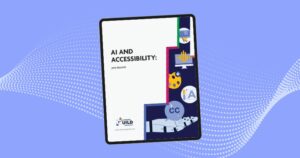Your cart is currently empty!

Pivot: Not all Microlearning is Memorable

Senior L&D executives are hearing a lot of industry chatter about microlearning. There aremany sound reasons to embrace microlearning in online training—whether it’s atwo-minute explainer video, a 10-minute branching scenario, or a 20-minuteeLearning course. Indeed, short learning objects are faster to create, easierto maintain, more transferable from one hosting platform to another, and,perhaps most importantly, don’t take employees away from their work for longerthan it takes to go for a walk. Yet not all microlearning is memorable.
If they are not targeted to meet a very specific need, if they use the wrongtone for the audience, or if the combination of words,images, activities, and/or animation don’t work together to create maximumimpact, short videos, scenarios, and online courses will missthe mark just like long, dull eLearning courses. If you’ve everfast-forwarded through an infomercial, you’ve skipped over a well-intentionedbut ineffective example of microlearning. Microlearning does not guaranteememorable learning.
Whenis microlearning appropriate?
So when should an organization incorporate microlearning? When it makessense to do so! Like gamification, branching scenarios, and augmented andvirtual reality, microlearning is simply another design technique to use when acompany wants to introduce something in an interesting way, create awareness ofa new workplace tool or practice, or roll out a series of short learningexperiences that allow for spaced practice.
The FiveMoments of Need described by Conrad Gottfredson and Bob Moshercan be a useful model to keep in mind when deciding whether microlearning fitsthe bill. What do people need when being introduced to a new way of doingsomething? How can we support them as they learn more and apply their newskills? What happens when they need to problem-solve or change the way they aredoing something? The answer can be found in short explainer videos,well-written performance aids, tightly designed branching scenarios, or amotivating podcast or recorded keynote speech—all of which fall into themicrolearning category.
If you choose the microlearning route, remember that youdon’t have to reinvent the wheel. eLearning designers and decision-makers canlook for inspiration from successfulYouTubers, shift their gaze to the advertising industry, orlisten to the best TED Talks of all time.All of these examples of microlearning outside of the eLearning sphere share afew elements: a new take on something familiar; a likable person or narratorwith an engaging tone; a compelling story with emotional appeal; excellentaccompanying visuals; and a team to bring all those elements together.
Not all microlearning is memorable,but it is a worthy goal to strive for.






